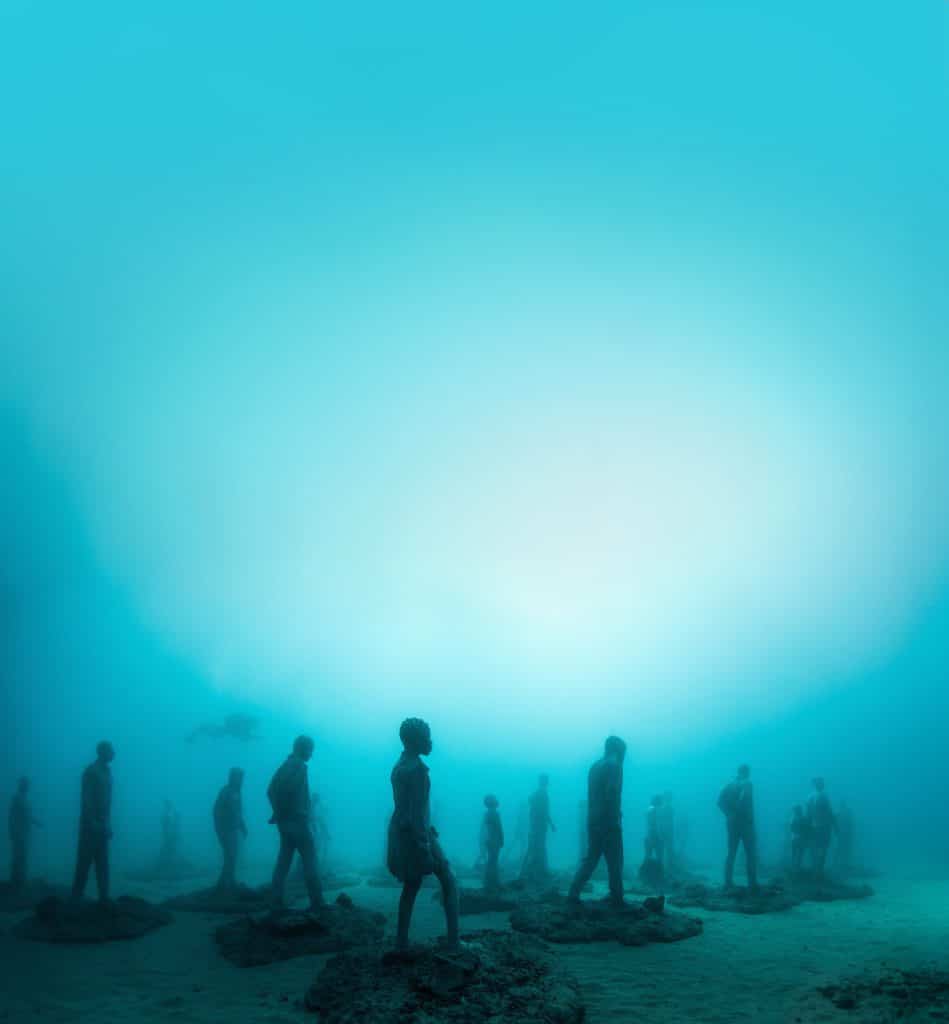Story HIEN BAU
Photos HIEN BAU, INTERNET
Museo Atlántico is the first underwater museum in Europe, a profound statement of art and preservation by British sculptor and environmentalist Jason deCaires Taylor.

Lanzarote, the easternmost of Spain’s Canary Islands, is a captivating destination due to its volcanic landscape, exceptional climate and extraordinary biodiversity.
In early 2017, Lanzarote also became home to Museo Atlántico, Europe’s first underwater museum. I recently visited this unique destination, but before viewing the art, other guests and I had to take a diving instruction class. (Certified divers can join separate tours). We were taught some basic techniques and practiced in a swimming pool, followed a shallow water dive near the shore. Taking the tour requires reasonable fitness and good health. The diving suit, with its 20kg oxygen tank and 8kg weighted belt, makes walking up and down the beach no easy task. On the bright side, even non-swimmers can participate in diving. For first-time or inexperienced divers, however, a depth of 12-15 meters can be daunting. After hours of training and trial dives at a depth of five meters, two out of our group of seven opted out. The most important thing, I learned, is to maintain a slow, steady breathing rhythm while enjoying the underwater journey.
Even though I had seen photos online, personally diving in front of Museo Atlántico’s massive artificial reef of over 300 works was truly awe-inspiring. The concrete sculptures by British photographer, artist and environmentalist Jason deCaires Taylor are living works of art, gradually transforming into homes for algae and marine life and creating new ecosystems.

Being connected to the sea and spending a deal of time exploring coral reefs, one of Taylor’s greatest passions is creating unique works that combine art with marine ecological conservation. His works are made from environmentally friendly materials with a neutral pH that do not affect the marine ecosystem or local flora. They are capable of lasting hundreds of years, integrating into the marine environment and forming artificial coral reefs as they attract octopuses, shrimp, crabs, snails, sea urchins and small fish. His numerous large-scale underwater museums and sculpture parks are a response to the 75% of the world’s coral area that is dying due to human encroachment and the impact of climate change.
Visiting Museo Atlántico, we have the opportunity to interact with the ocean in a different way, not only admiring art but also experiencing the vibrant and delicate underwater world. Taylor’s underwater sculptures are both reminders of human impact and symbols of rebirth, showing that nature can recover if protected. Each sculpture cluster in Museo Atlántico in Lanzarote is a dialogue between past and present – and diving among them, as I discovered, is a spectacular and haunting experience!
Some notable works:
The Human Gyre
The Human Gyre symbolizes the cycle and recurrence of life and the interdependence within the ecosystem, from humans to nature and the sea.
The Rubicon (Critical Decision)
The Rubicon is a long line of 35 life-sized sculptures walking in the same direction, with expressionless faces showing indifference to their surroundings as they enter deep waters from which they cannot turn back. The message emphasizes that humanity is now standing at crucial thresholds in dealing with climate change and environmental crises, needing immediate action before it is too late.
Raft of Lampedusa
Lampedusa is a small Italian island, a destination for undocumented migrants from Africa and the Middle East heading to Europe by boat. The name Lampedusa has become a symbol of hope as well as despair, as many reach their destination while others are lost to the ocean on their quest for a better life. Next to an inflatable boat named Lampedusa is a sculpture of tourists casually taking selfies, reminding us of the indifference to the migration crisis and the fate of those struggling daily to survive.










